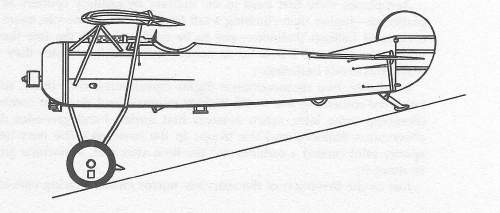PC Pilot
The Complete Guide to Computer Aviation
by Steve Smith
CHAPTER ELEVEN
DYNAMIX'S RED BARON
"WW I Ghastly Mistake;
Archduke Still Alive"
—National Enquirer, 1918
If the Civil War was the first modern war (historians say it was the first industrialized war), World War I, paradoxically, was the last premodern war. The first world war (at the time it was called The Great War) was a time of transition, socially and militarily. The end of idealism and the beginning of the impersonal war machine. The disappearance of honor and the emergence of the dirty business of war. The death of ten million people and the birth of aerial warfare.
The "aeroplane" had been born less than a dozen years before. Few foresaw it as a weapon of war. Marshall Foch, head of the ever-prescient French military, declared, "The aeroplane is all very good for sport. For the army, it is useless."
Aeroplanes were first used in the military by artillery spotters as observation platforms—higher than climbing a tall tree or a church steeple, more mobile than a manned balloon (balloons—not to be confused with the free-floating Zeppelins—were tethered a mile or so behind the front lines; later they were ringed with antiaircraft batteries).
Inevitably, two reconnaissance flights encountered each other, somebody unholstered something like a .455 Webley revolver, and air-to-air combat was born. (Bombing came later, when aviators first hurled hand grenades down on the observation balloons and the troops in the trenches.) The next time aloft, the spotter-pilot carried a carbine, and the time after that, a machine gun and a guy to shoot it.
Just as the invention of the rearview mirror enabled racing cars at the Indianapolis 500 to dispense with the riding mechanic, the invention of the synchronized machine gun allowed pilots to eliminate the weight and bulk of a separate gunner. A pushrod from the engine prevented the machine gun from firing when the spinning propeller was directly in front of the barrel. (This was after they'd tried mounting the guns atop the upper wing—of a biplane—to shoot over the propeller; but when the guns jammed—as they always did—you were a sitting duck.)



Thus was born dogfighting.
The style of early air-to-air combat was inherited from the ritualistic codes of other wars, other centuries (the Europeans had not fought a major war since the defeat of Napoleon in 1815, ninety-nine years earlier). At first, dogfights were conducted according to the rules of an ancient form of royal combat: jousting. Like duelists, or gunfighters at the OK Corral, the aeroplanes would square off at opposite corners of the sky and rush directly at each other, like knights in armor—on horseback, carrying lances—each trying to unhorse the other.
(Or like James Dean playing "chicken" in Rebel Without a Cause.)
It was considered cowardly and unsportsmanlike to sneak up behind a fellow aviator and shoot him in the back. The first time Max Immelmann shot down an enemy plane, he landed beside it and offered to help the wounded British pilot. After the great tactician Oswald Boelke was shot down and killed, a lone British plane flew over the German ace's aerodrome and dropped his boots and a wreath with the inscription "To the Memory of Captain Boelke, Our Brave and Chivalrous Opponent."
(Boelke himself suffered from no such romanticism. His secret: "Well, it is quite simple. I fly close to my man, aim well, and then he falls down.")
Table of Contents | Previous Section | Next Section
